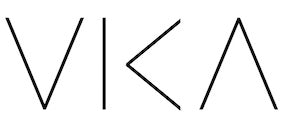10 things that contain micro plastic

Micro plastics is the big topic of the moment. No matter where, you just can't get past it. Micro plastics in cosmetics, micro plastics in cheaply produced mass-produced goods, micro plastics in food and actually almost all elements that surround us every day. Bad enough, because micro plastic is everything - but not healthy.
In the end everything is plastic. But not only apparently obvious plastic bottles, plastic packaging as we know it from the supermarket or plastic lids contain the unrecognisable plastic poison...
10 everyday things you would not have thought of at first sight:
- scrubs & shower gel, deodorants
- Lipsticks, powder
- Day/sun creams, Après Shave
- garments made of synthetic fibres [1]
- Tyres
- Glitter
- Cigarette butts
- Paints and varnishes
- cleaning & dishwashing cloths, cleaning agents
- Toys for children
By the way: If the list of ingredients [2] contains "polyethylene" (PE), "polypropylene" (PP), "polyamide" (PA) or "polyethylene terephthalate" (PET), then micro plastic is definitely included.
Nature has been feeling this for a long time and for years fish have been dying en masse from the mistakenly eaten dose of plastic that they mistook for food. After all, the oceans and beaches are full of them. Furthermore, the sewage plants do not manage to filter all dirt particles and (micro-)plastic residues from our waste water and so they end up in the oceans via the rivers. Waste produced on a national level thus becomes a global problem.
"Plastic endangers our ecosystems because it is now available as a supposed food for marine organisms. The smaller the micro plastics, the more likely it is that mussels, worms or fish will confuse the particles with food or passively absorb them through filtration," says Nadja Ziebarth, marine protection expert at BUND.
(Source: Utopia 2019, "Micro plastics in cosmetics:
Where it hides and how you can avoid it")
Anyone who's seen A Plastic Ocean knows what I'm talking about. The others, who are unknowingly scratching their freshly washed with micro plastic contaminated shampoo, should do so immediately. Scary pictures, hard facts. The ugly truth presented in the smallest detail, because micro plastics are plastic particles that are smaller than 5 millimetres. Thanks to the ingenious picture material they become visible to the viewer. In addition, they are perfectly illuminated, right down to the infinite depths of the sea. Here is the deepest point over 10km away. The Mariana Trench - a deep sea trench in the western Pacific Ocean. Even here you can still find plastic bottles. Not even man can stay down here for even a moment in his life.
"80 percent of the plastic garbage that ends up in the oceans comes from land. It produces 260 million tons a year. The Federal Environment Agency lists how much is estimated to end up in the oceans. For the EU, environmental consultant Alexander Potrykus has conducted a study to determine what type of waste heads the waste statistics of the European seas: Plastic bags and bottles.
(Source: Die Zeit 2018, "Micro plastics: The plastic in us.")
Just how contaminated not only the oceans and the products we consume in our daily lives are, but also our perception itself, is made clear in almost everyone's news feed. On social media, a new, young, partly radical, partly instructive, but first and foremost always enlightening lobby for the sustainability industry is growing up. The so-called Slow Movement, which includes various subgroups such as Slow Food and Slow Fashion.
A wonderful thing!
Fair working conditions, fair production conditions, neither at the expense of the workers nor of nature. Simply ethically-morally correct, as it should be. Short production and manufacturing routes, fair payment, appropriate working conditions, resource-saving alternatives and sustainable use of materials. This also includes: NO micro plastics! These are the principles that the Slow Movement has taken up as its banner and is attracting more and more disciples for its mindful community. An attitude to life, more than that, an attitude. Humanity and mindfulness, towards oneself, towards others and above all towards the planets, shape the thinking of this movement.
Of course, there are now plenty of (fair) alternatives.
What exactly to look out for when buying primarily cosmetics is revealed by BUND on its website and Greenpeace advertises with (micro-)plastic-free alternatives. An informative and very practical tool for unmasking the environmental toxin is the app code check for the smartphone. A rethink is more than necessary, a subsequent change is a prerequisite.
The prerequisite for what?
The continued existence of our species.
1] Examples that are particularly often used by low-cost fashion chains are polyester, polyamide, polyacrylic, nylon, elastane or microfibre. Tip: Also, do not use fabric softener, especially as it promotes the detachment of fibres in the laundry.
2] To be on the safe side, the following ingredients should also be avoided: Acrylate copolymer (AC)
Acrylates Crosspolymer (ACS), polyamides (PA, nylon-6, nylon-12), polyacrylates (PA), polymethyl methacrylates (PMMA), polyethylene (PE), polyethylene terephthalates (PET), polypropylene (PP), polystyrene (PS), polyurethane (PUR)
NADINE studied Romance Languages (B.A.) and International History of the Modern Age (M.A.) at the University of Bonn. Currently she is working as a freelance author, ghostwriter and model, to have enough time for her research, thoughts and her passion, writing. Traveling is one of her greatest passions, as is her love of literature, cultural studies and linguistics. During one of her journeys she found her way to herself through meditation and mindfulness. On her blog and Instagram, as well as on Facebook, she shares these and other personal experiences from her everyday life as a bisexual woman and talks about past experiences from her open relationship.
